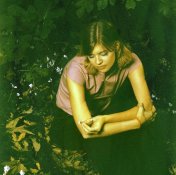George Papantoniou
Member
So, I found some samples made for the Film Acceleration technique testing. The films used were Kodak EPP (said to give the most interesting results), Kodak E100S (did not show much colour shift) and Kodak GPT (a negative film, so no cross process involved).
The films were heavily underexposed (-2 or -3 stops), at first developed in D-76 stock solution (8-10 min, 20 deg celcius) and then in a normal two bath C-41 kit in order to activate the colour dyes and bleach the silver. The result was negatives (as it was a cross-process) that gave strange colour and contrast effects.
Then tried to use the D-76 at 38 degrees too, but it made part of the image to get solarized (you can see a couple of samples) and the result to be part positive, part negative. It was quite dark and unprintable too.
I guess that using the Rodinal instead of D-76 might cause problems because of its developing agent, but I'm not sure...
Nick Knight must have used this technique for his widely known fashion shots.
The films were heavily underexposed (-2 or -3 stops), at first developed in D-76 stock solution (8-10 min, 20 deg celcius) and then in a normal two bath C-41 kit in order to activate the colour dyes and bleach the silver. The result was negatives (as it was a cross-process) that gave strange colour and contrast effects.
Then tried to use the D-76 at 38 degrees too, but it made part of the image to get solarized (you can see a couple of samples) and the result to be part positive, part negative. It was quite dark and unprintable too.
I guess that using the Rodinal instead of D-76 might cause problems because of its developing agent, but I'm not sure...
Nick Knight must have used this technique for his widely known fashion shots.









